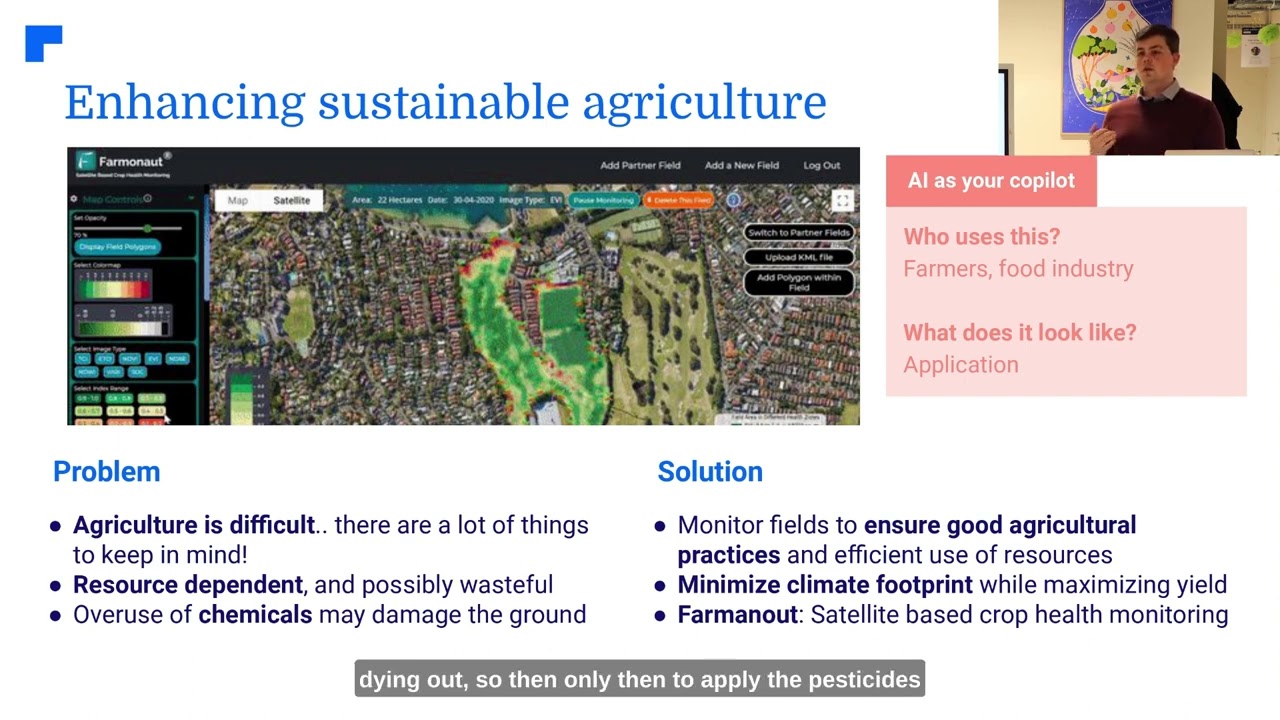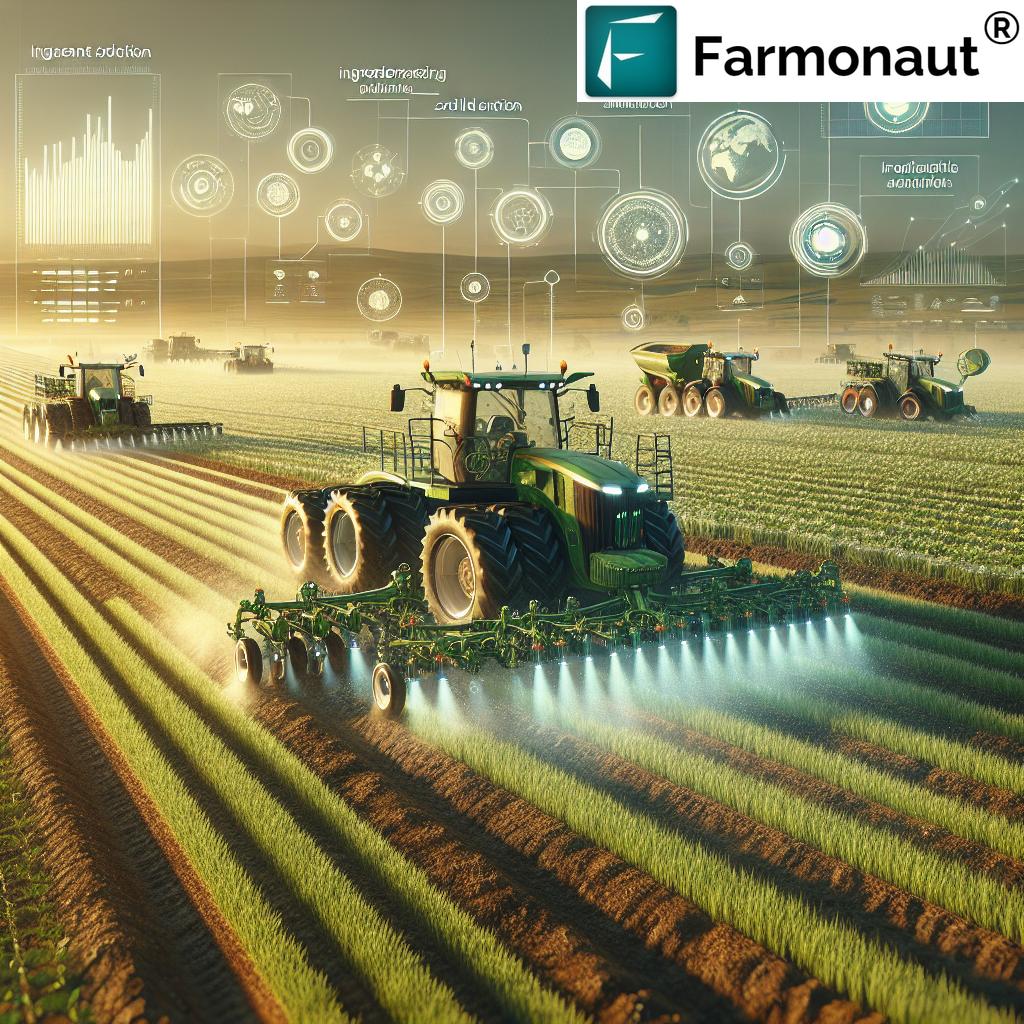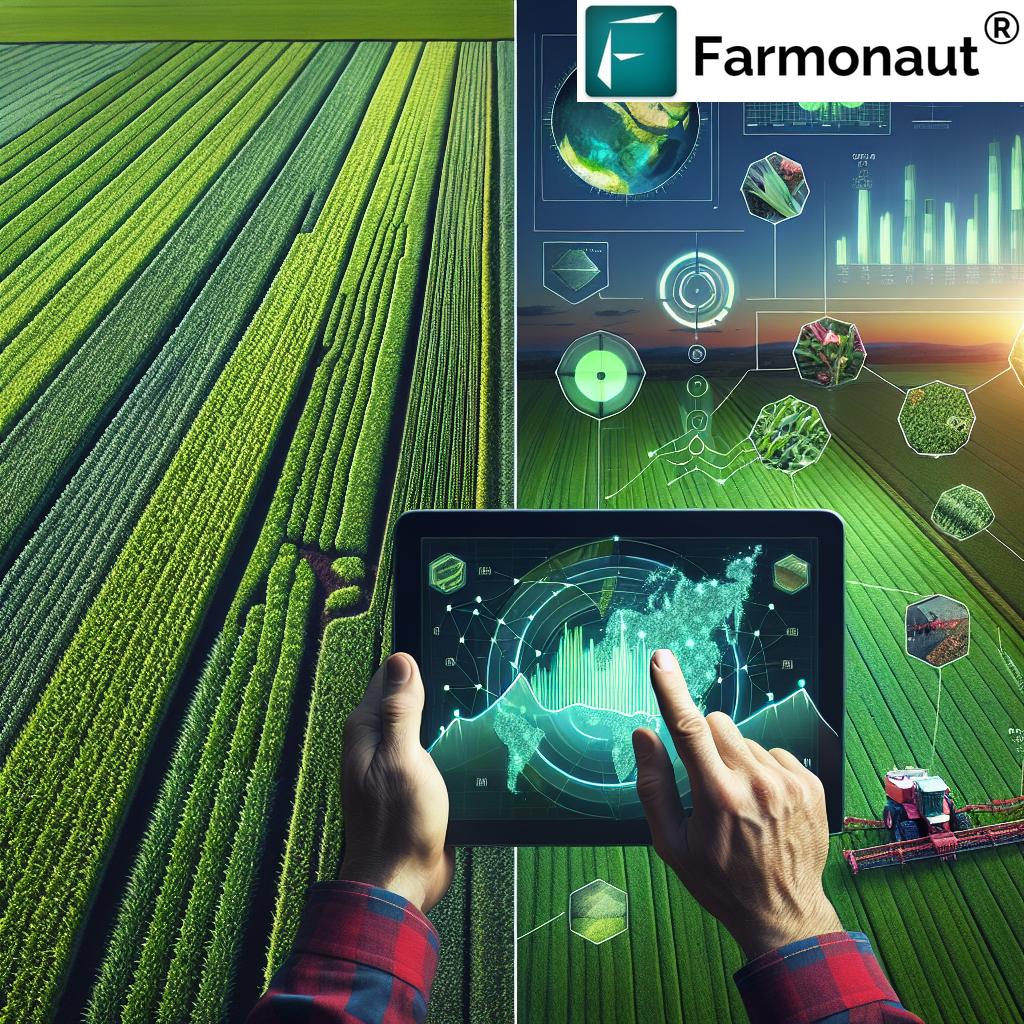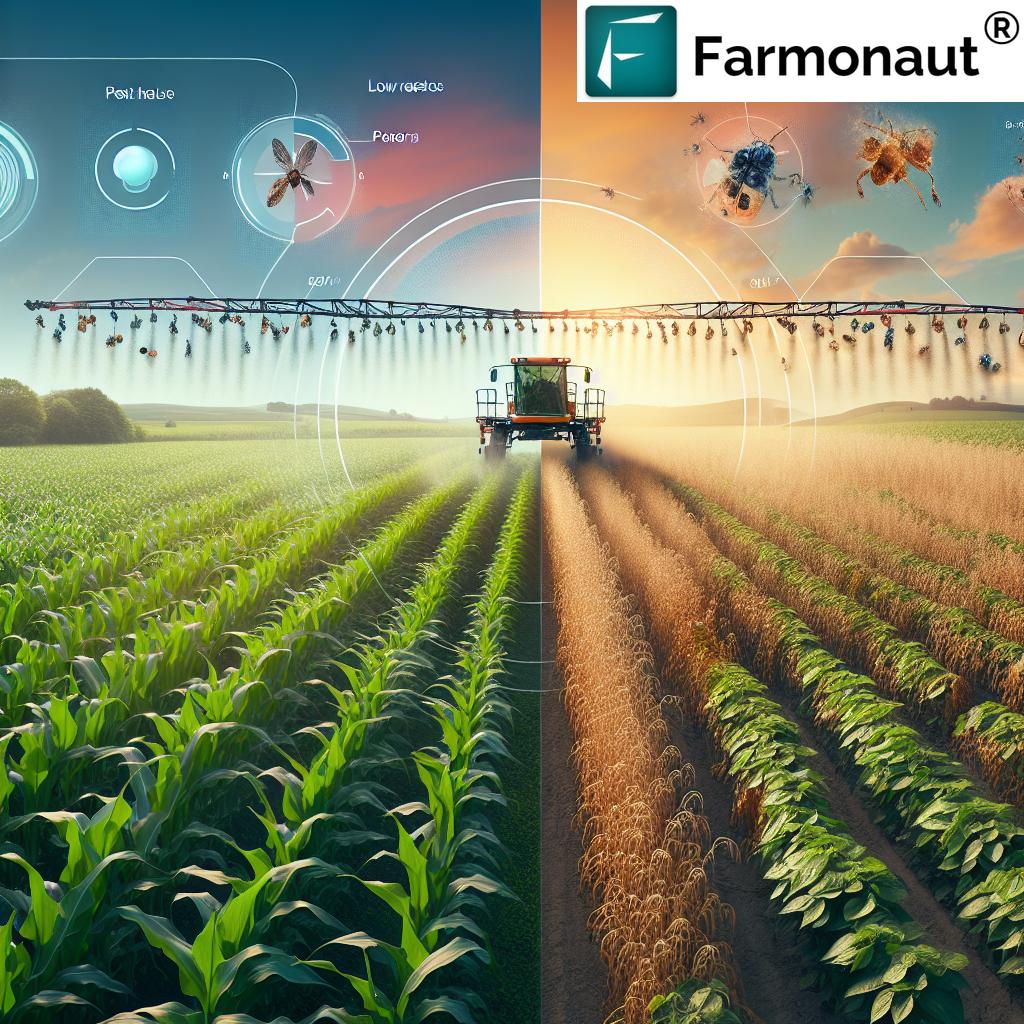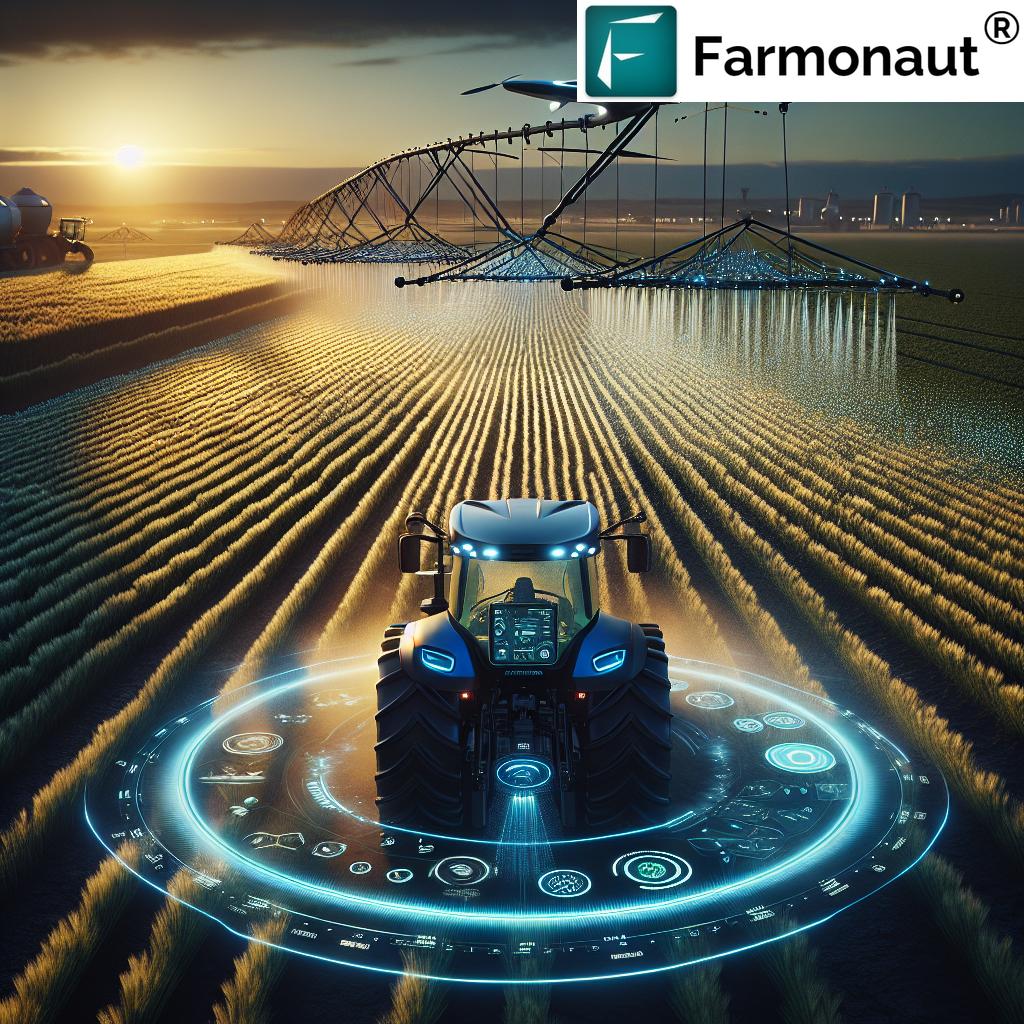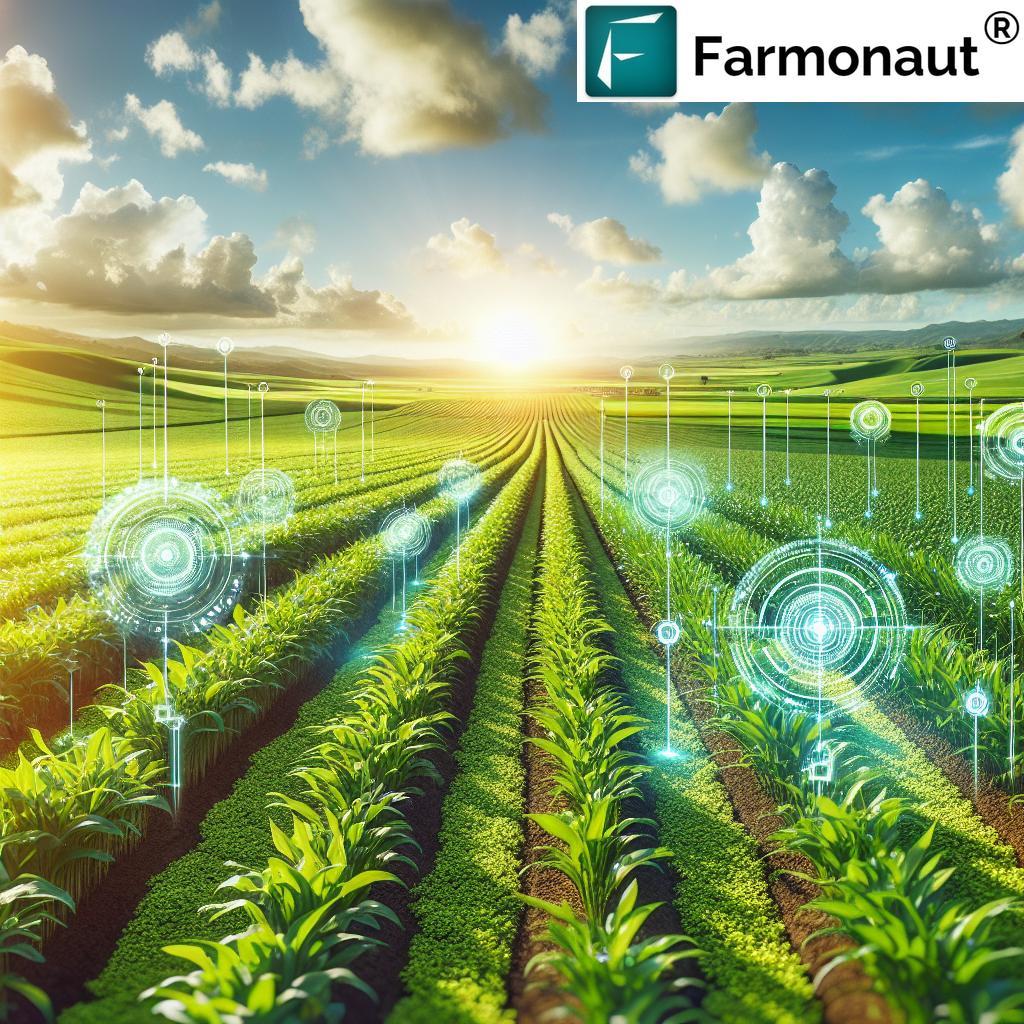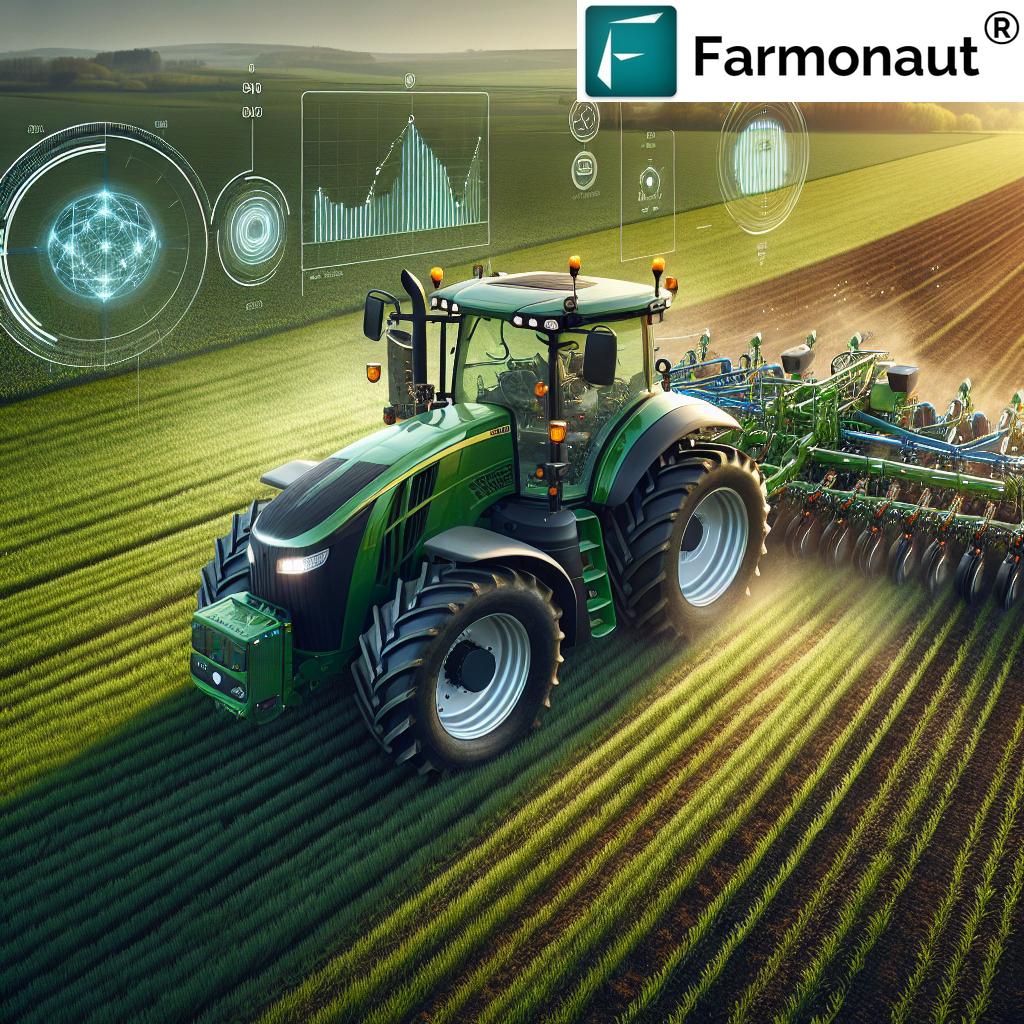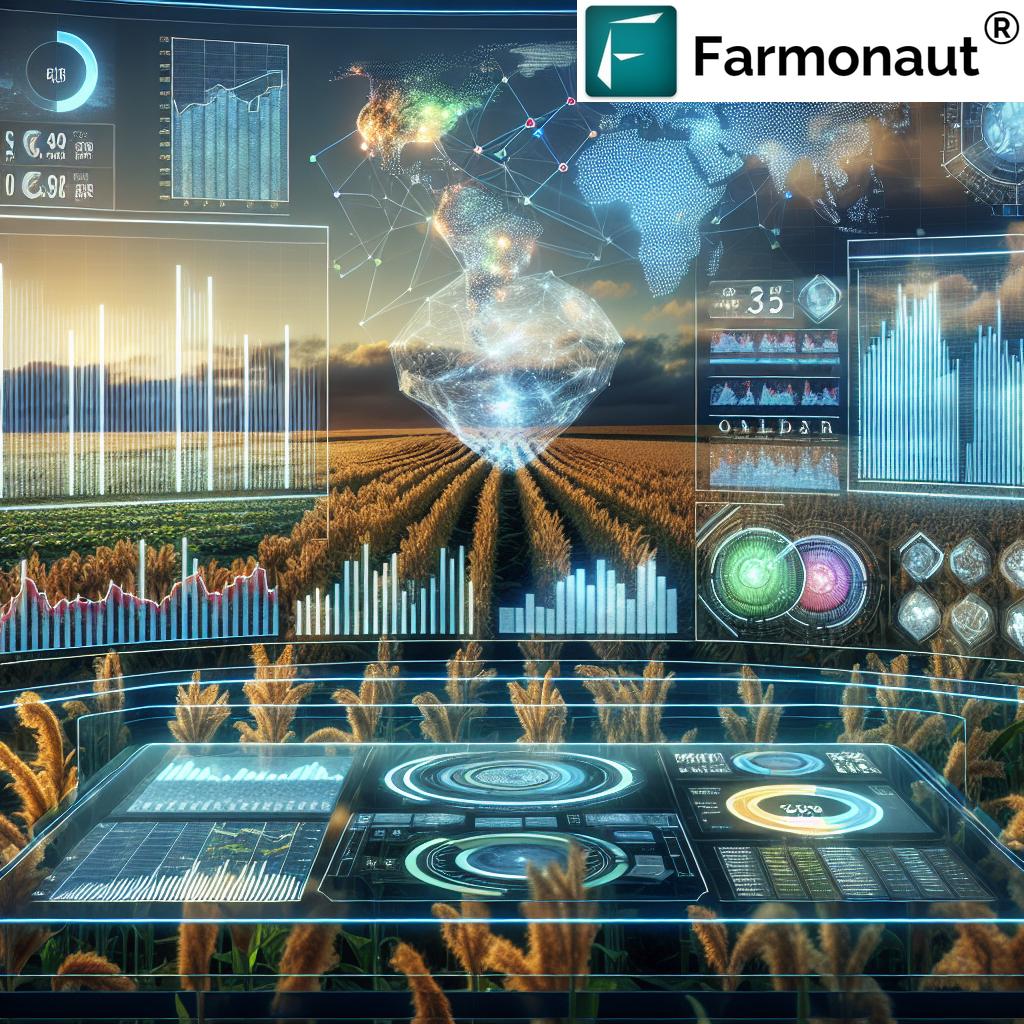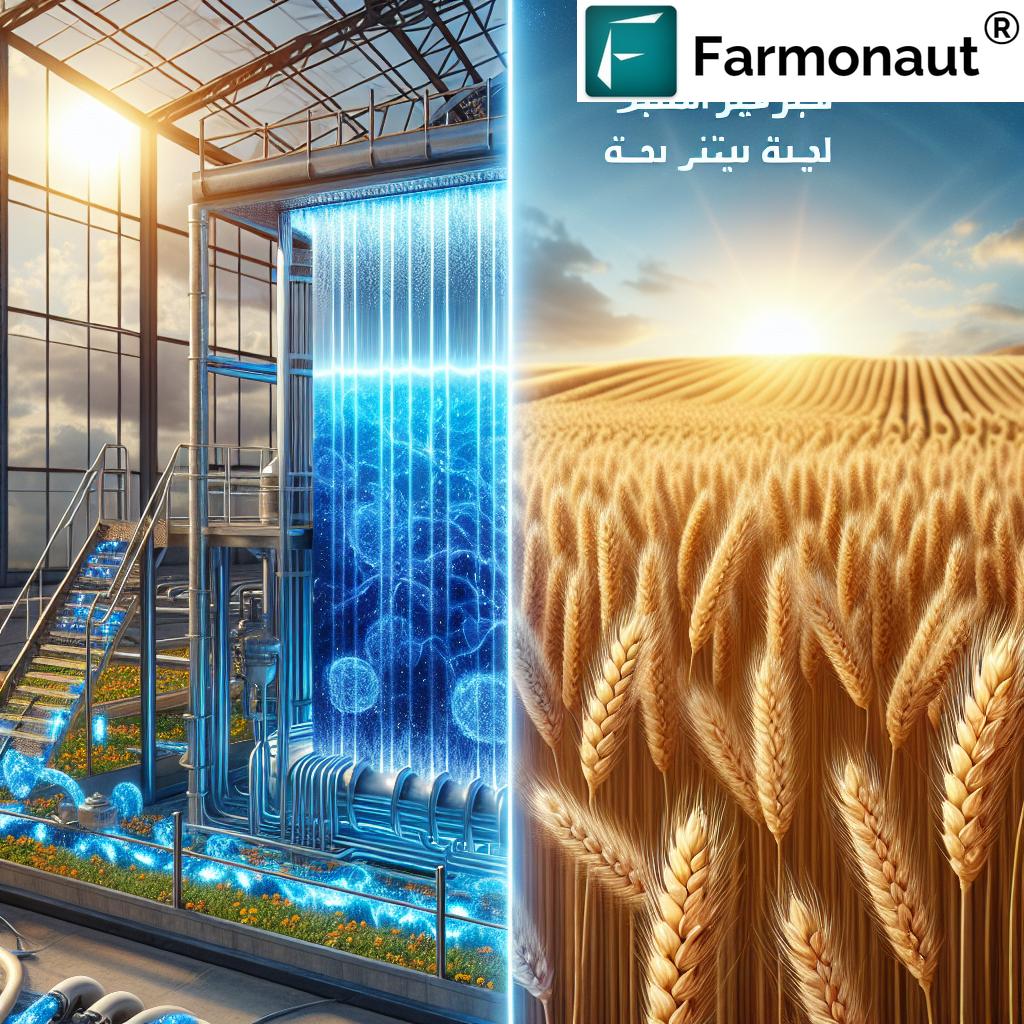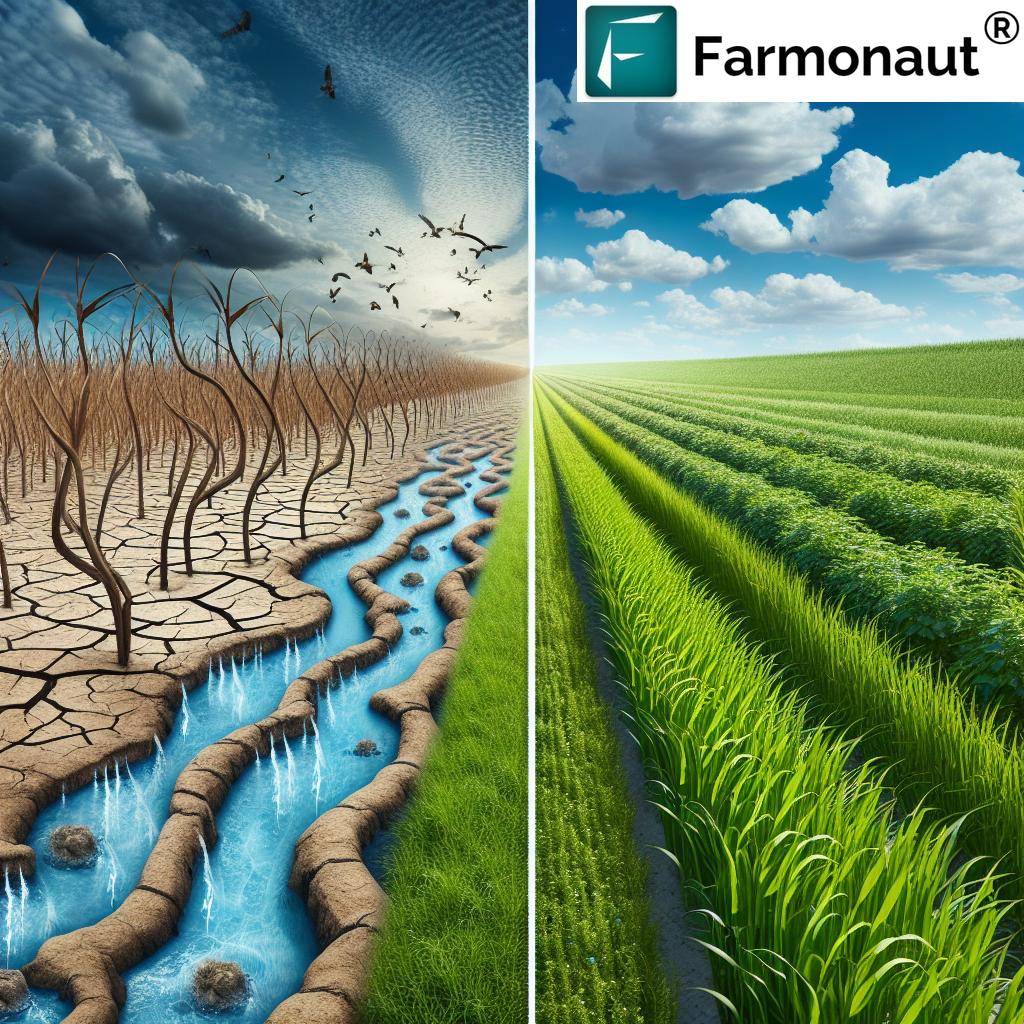Digital Agronomy Secrets: 7 Tech Hacks Changing Farming
“Precision agriculture can increase crop yields by up to 20% using data-driven digital agronomy techniques.”
Table of Contents
- Digital Agronomy: Transforming Agriculture through Technology
- What is Digital Agronomy?
- 7 Digital Agronomy Tech Hacks Revolutionizing Modern Farming
- 1. GPS & GIS in Agriculture: Mapping Precision & Productivity
- 2. Remote Sensing & UAVs: Aerial Imagery For Crop Health
- 3. Soil Sensors For Smart Farming
- 4. Data Analytics For Crop Management
- 5. Automation & Autonomous Farm Machinery
- 6. Integrated Pest Management Tools (IPM)
- 7. Blockchain-Based Traceability & Resource Management
- Comparison Table of Digital Agronomy Tech Hacks
- Real-World Digital Agronomy Applications
- Farmonaut: Satellite-Based Precision Agriculture for All
- Major Benefits of Digital Agronomy
- Challenges & Considerations
- The Future: Embracing Digital Agronomy for Sustainable Farming
- Frequently Asked Questions
Digital Agronomy: Transforming Agriculture through Technology
In the dynamic landscape of agriculture, digital agronomy stands as a beacon of innovation. By leveraging a suite of advanced technologies—such as GPS, satellite imagery, data analytics, and automation—we are witnessing a transformation in how farmers manage crops, optimize resource use, and drive sustainability. This game-changing approach, anchored in precision agriculture technology, catalyzes increased productivity, enhanced sustainability, and greater profitability for all involved in the food value chain.
Farmonaut is at the forefront of this paradigm shift, making precision agriculture both affordable and accessible across the globe with its satellite-powered farm management solutions. Whether you’re an individual farmer, an agribusiness, a government agency, or a financial institution, the impact of digital agronomy is redefining the future of farming and forestry.
What is Digital Agronomy?
Digital agronomy is our bridge to smarter, more sustainable agriculture. By integrating state-of-the-art technologies like remote sensing in agriculture, soil sensors for farming, AI-driven analytics, and autonomous farm machinery, we can precisely manage every aspect of farm operations. This leads to improved yields, resource efficiency, and a lower environmental footprint.
Key components of this digital revolution include:
- GPS & GIS: For spatial mapping and field-level precision management.
- Remote Sensing & UAVs: For high-resolution crop monitoring through drone and satellite imagery.
- Soil Sensors: For 24/7, accurate field data on critical soil properties.
- Automation: For labor-saving machinery and systems.
- Data Analytics: For turning data streams into actionable insights.
7 Digital Agronomy Tech Hacks Revolutionizing Modern Farming
1. GPS & GIS in Agriculture: Mapping Precision & Productivity
At the heart of precision agriculture technology lies the synergy of the Global Positioning System (GPS) and Geographic Information Systems (GIS). These tools deliver accurate georeferencing for farm machinery, equipment, sensors, and even drone flight paths, ensuring that every action—be it planting, fertilizing, spraying, or harvesting—occurs at the optimal position within our fields.
- GPS: Provides us with real-time positioning, making possible straight rows, reduced overlap, and automation of steering and operations.
- GIS in Agriculture: Allows us to layer and analyze spatial data (e.g., soil properties, crop characteristics, topography), creating detailed field maps essential for site-specific management and resource allocation.
The result? Precision in every field activity yields increased productivity, lower input costs, and a dramatic reduction in resource waste. For instance, by mapping field variability, we’re able to optimize the application of fertilizers, pesticides, and irrigation for each unique zone.
Learn more about how GPS and GIS are transforming agriculture.
2. Remote Sensing & UAVs: Aerial Imagery For Crop Health
Remote sensing in agriculture has redefined how we approach large-scale monitoring and intervention strategies. By deploying Unmanned Aerial Vehicles (UAVs/drones) equipped with high-resolution cameras and sensors, we gain immediate access to aerial imagery—enabling rapid, non-intrusive, and comprehensive assessment of field health.
- Drone Imagery in Agriculture: Used to identify nutrient deficiencies, water stress, pest infestations, and early signs of disease outbreaks with unmatched speed and accuracy.
- Satellite Imagery: Allows regional or global field and forest resource mapping for long-term planning and climate adaptation strategies.
These technologies are essential for timely interventions—preserving crops, minimizing loss, and maximizing profits. Farmonaut makes remote sensing accessible even to smallholder farmers through easy integration via its app and APIs, offering large-scale farm management for plantations, businesses, and agencies.
Explore how drones and satellites are changing precision agriculture.
3. Soil Sensors For Smart Farming
Healthy soil is the backbone of productive agriculture. Soil sensors for farming deliver real-time measurements of moisture, nutrient content, temperature, and other vital parameters—directly guiding our decisions on irrigation, fertilizer application, and crop selection.
- By integrating sensor data with weather forecasts and satellite imagery, we perform predictive modeling that enhances the precision of every farm intervention.
- This directly increases yields and helps cut unnecessary input costs by optimizing when and how much to irrigate or feed crops.
- 24/7 monitoring means issues such as water stress or nutrient deficiencies are detected and addressed before they can escalate.
That’s why Farmonaut makes continuous, real-time crop and soil monitoring easy—even for those with limited technical expertise—by delivering the insights via simple dashboards in their apps.
See why soil sensors are critical for resilient farming.
4. Data Analytics For Crop Management: From Data to Decisions
The real power of digital agronomy lies in transforming mountains of field data into clear, actionable insights that guide real-time crop management. Data analytics for crop management encompasses:
- Combining information from soil sensors, drone imagery, weather models, and farm equipment records.
- AI-driven analytics (such as Farmonaut’s Jeevn AI) offering personalized farm advisory, suggesting exact interventions—when to irrigate, what to spray, ideal fertilizer doses, and more.
- Advanced forecasting to predict outbreaks of pests, disease, or weather risks—allowing farmers to act early and minimize loss.
With platforms like Farmonaut, we can seamlessly aggregate, analyze, and visualize all this data—directly on our mobile phone or PC. This results in optimized resource allocation, improved yields, and better economic outcomes even for those with minimal digital experience.
Discover how crop management data analytics revolutionize farm decisions.
See how you can integrate Farmonaut’s satellite and weather API into your agritech solutions or explore the developer documentation.
5. Automation & Autonomous Farm Machinery
Labor shortages and rising operational costs have intensified the value of automation in agriculture. Autonomous farm machinery—from driverless tractors to harvesting robots—now perform complex field activities with minimal human oversight.
- Automated planters, sprayers, and harvesters not only save time but also ensure that actions are completed with a previously impossible degree of precision and consistency.
- Projects like the “Hands Free Hectare” have set the benchmark, but affordable automation is now within reach thanks to digital monitoring and AI.
- Fleet management tools (like those offered by Farmonaut) allow for efficient scheduling, tracking, and maintenance of all farm equipment on a single platform.
By automating labor-intensive and repetitive tasks, we not only boost efficiency but also enhance safety and significantly reduce operational costs.
Read more about the rise of autonomous machinery in farming.
“Over 70% of large farms now use satellite imagery for real-time crop management and sustainability decisions.”
6. Integrated Pest Management Tools (IPM)
The fight against pests and disease outbreaks can be won or lost on timing and data. Integrated pest management tools harness AI, machine learning, and sensor data to monitor for pests, predict outbreaks, and guide targeted interventions.
- Machine learning interprets images from pheromone traps, identifying early signs of infestations or disease.
- Satellites and drones offer direct monitoring of pest-related crop stress from above, allowing us to swiftly deploy interventions and save healthy portions of crops.
- By applying pesticides precisely when and where needed, we minimize both environmental impact and input cost.
These tools are key for achieving sustainable farming practices while maximizing yield. For enhanced traceability and food safety, Farmonaut’s blockchain product traceability platform can help integrate this data directly into supply chains. Explore pest management innovation.
7. Blockchain-Based Traceability & Resource Management
With rising consumer demand for transparency and trust, blockchain-based traceability ensures every stage of a food product’s journey—from field to fork—is tracked and auditable.
- Farmonaut’s solutions leverage blockchain to record satellite-proven crop data, input usage, quality standards, and transportation events.
- Supply chains are fortified against fraud, quality lapses, and inefficiencies.
- Instant verification benefits farmers, corporates, and regulatory authorities alike.
For businesses aiming for sustainable sourcing, Farmonaut’s product traceability system is invaluable.
Comparison Table of Digital Agronomy Tech Hacks
| Hack Name | Main Function | Estimated Yield Improvement (%) | Estimated Resource Savings (%) | Sustainability Impact |
|---|---|---|---|---|
| GPS & GIS Mapping | Accurate field mapping and site-specific input management | 10–25% | 15–30% | High |
| Remote Sensing & UAVs | Aerial crop assessment for health, stress, and issues | 15–30% | 20–35% | High |
| Soil Sensors | Continuous monitoring of soil moisture/nutrients | 10–20% | 15–40% | High |
| Data Analytics for Crop Management | Actionable insights from multisource agricultural data | 15–35% | 20–40% | High |
| Autonomous Machinery | Automated field operations (planting, spraying, harvesting) | 10–25% | 18–30% | Medium–High |
| IPM Tools | AI-powered pest/disease prediction and control | 10–22% | 15–28% | High |
| Blockchain Traceability & Resource Management | Transparent supply chain and optimized input application | 8–20% | 12–25% | High |
Real-World Digital Agronomy Applications
1. Precision Agriculture Technology
By enabling site-specific input application (water, seeds, fertilizers, pesticides), we minimize waste and environmental impact, while boosting both yield and economic returns. Variable-rate technology (VRT) in particular has become a staple—addressing field heterogeneity that would otherwise lead to sub-optimal management and lost profits.
2. Sustainable Forestry Management
In forestry, digital agronomy technologies like remote sensing and GIS drive efficient resource use, optimize harvesting cycles, support biodiversity preservation, and guide climate adaptation.
3. Water & Irrigation Management
Modern irrigation systems harness soil sensors, drone imagery, and remote weather data to supply just the right amount of water at the right time—cutting water use by up to 25% while keeping yields high.
For plantation businesses and NGOs, Farmonaut’s forest and crop plantation advisory tools offer expert insights on maximizing sustainability and productivity from forest to field.
4. Streamlined Crop Loan and Insurance Verification
With satellite-based verification, smallholder farmers can more easily access credit and insurance, while lenders reduce fraud. Farmonaut provides seamless satellite-backed verification for efficient crop loan approval and insurance claims—helping hundreds of thousands of farmers worldwide. Read more about crop loan and insurance applications.
Farmonaut: Satellite-Based Precision Agriculture for All
As global challenges threaten food, water, and land resources, Farmonaut is addressing the critical gaps in digital literacy, accessibility, and cost that hold farmers back from reaping the rewards of digital agronomy.
- Accessible Technology: Offers farm management on Android, iOS, web, and via API for developers and businesses.
- Real-Time Satellite Crop Health: Watch over your fields anytime—monitor NDVI, soil moisture, and other key metrics for smarter decisions on irrigation and fertilization.
- AI-Powered Farm Advisory: Get Jeevn AI advice and forecasts tailored to your unique farm data for better yields and efficiency.
- Blockchain Traceability: Protect your brand and the consumer with end-to-end product tracking, directly integrated with field data.
- Fleet & Resource Management: Efficiently manage your agricultural fleet, fuel use, and maintenance to minimize downtime and costs.
- Carbon Footprinting: Measure, report and improve your sustainability index with robust carbon footprinting tools.
With subscription plans scaling from single-hectare farms to regional governments or multinational agribusinesses, Farmonaut is democratizing access to advanced precision agriculture technology.
Start now: Get real-time crop health monitoring, resource management, and precision farming tools tailored for your needs.
Major Benefits of Digital Agronomy
- Increased Efficiency: Site-specific actions, input optimization, and data-driven decisions dramatically reduce waste and boost per-hectare returns.
- Environmental Sustainability: Advanced irrigation and input mapping cut runoff, reduce greenhouse emissions, and foster healthy, resilient soils.
- Enhanced Decision-Making: AI and data analytics empower both novice and experienced farmers to make timely, informed calls in the field.
- Improved Crop Health & Yields: Early warning of disease, water stress, or pest threats means healthier crops and higher margins.
- Affordability & Accessibility: Subscription-based digital tools (like those from Farmonaut) make advanced agronomy reachable for every farm size and type.
- Supply Chain Transparency: Blockchain traceability reassures buyers, regulators, and consumers—the entire journey is visible and verifiable.
- Scalable Solutions: Flexible tools that scale from small family plots to massive government-run farms.
Challenges & Considerations
- Data Management: With the flood of sensor, equipment, and satellite data, robust management systems and technical training are essential. Digital platforms like Farmonaut’s automate integration and visualization, lowering the learning curve.
- Cost of Technology: High up-front investment is a reality, but affordable software models (like subscriptions, not hardware) make precision farming possible for all scales.
- Digital Literacy in Agriculture: Skill development is critical—educational initiatives, such as Purdue University’s Digital Agriculture Curriculum, help prepare the next generation of data-savvy farmers and agronomists.
- Adoption Barriers for Smallholders: Simpler apps, local-language interfaces, and community-based support help lower the digital divide.
The Future: Embracing Digital Agronomy for Sustainable Farming
The digital transformation of agriculture is more inevitable and necessary than ever. Global food security hinges on our ability to do more with less: less land, water, and inputs, but more knowledge, insight, and technology. Digital agronomy leverages advanced technologies to turn this vision into reality—one field, one forest, one farm at a time.
As platforms like Farmonaut continue to drive costs down and amplify benefits, we encourage all in the agro-ecosystem—farmers, business leaders, policymakers, educators—to invest in digital literacy, embrace new digital tools, and collectively nurture a future where food and fiber production is profitable, sustainable, and resilient.
Frequently Asked Questions
What is digital agronomy?
Digital agronomy is the practice of using advanced technologies—such as GPS, satellites, AI, sensors, and analytics—to manage agricultural and forestry operations more precisely, efficiently, and sustainably.
How does remote sensing in agriculture benefit farmers?
Remote sensing, using satellites or drones, provides real-time, accurate data on crop health, soil moisture, pest or disease outbreaks, and resource variability—enabling timely interventions that increase yield and reduce input costs.
Are Farmonaut’s solutions suitable for small farms?
Yes! Farmonaut offers scalable, subscription-based plans and easy-to-use apps, making advanced precision agriculture accessible to both smallholders and large agribusinesses.
How do soil sensors improve irrigation and fertilizer management?
Soil sensors collect real-time data on variables like moisture and nutrient levels, which, when analyzed, inform precise irrigation schedules and fertilizer application, maximizing plant health and minimizing waste.
What is blockchain traceability in agriculture?
Blockchain creates a tamper-proof record for every stage of food or fiber production and transport, increasing transparency, food safety, and consumer confidence.
How can I access Farmonaut’s digital agriculture tools?
Download the Android app, iOS app, or use the web app. For integration with your systems, see the API page and developer docs.
Can these digital tools help with government or large-scale farm operations?
Absolutely. Farmonaut’s solutions scale from individual farmers up to corporate agribusinesses and government monitoring programs, with features like large-area monitoring, fleet/resource management, and compliance reporting.








